Trick: Throwing Card Through A Window
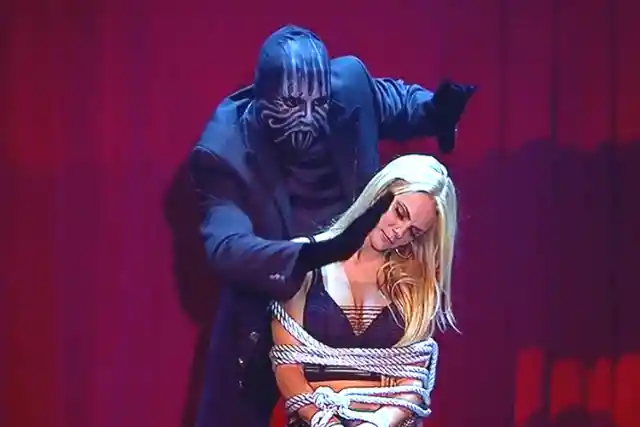

Magicians have long preserved the mystique of their craft. Audiences the world over have witnessed magicians produce something from nothing, saw someone in half, or even teleport an assistant or two, without a clue as to how the trick took place.
If you’d like to remain in the dark on how magicians achieve their most incredible feats, then read no further. Because we’re about to pull back the curtain on their most infamous tricks, and some of these reveals are sure to leave you with eyes bulging out of your face…
Trick Revealed
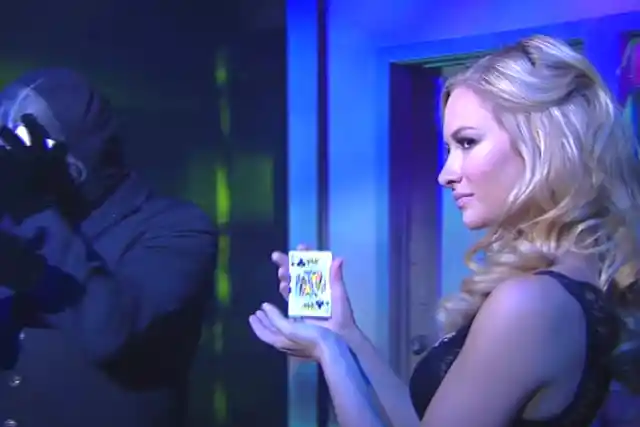

Here’s an entertaining variation on the “pick a card, any card” classic. A spectator chooses a card from the deck, then places it back in the deck without the magician knowing the card. This is always done in a crowd so the audience can attest to the performer being unaware of the card.
Seconds later, the magician heaves the entire deck at a storefront window. The spectator is now shocked to see that the card they chose is now stuck to the inside of the window.
Trick: Strait-Jacket Escape


In the most subtle and discreet manner possible, the magician pushes a certain card into the spectator’s hand. This must be done meticulously while still maintaining the illusion of choice. When he asks the spectator to remember their card, then slip it back into the desk without showing the magician, it doesn’t matter – the magician already knows which card was chosen.
He’s also sliced the top off of a different card as a marker since it’s shorter the rest of the cards in the deck. Putting the marked card in front of the specific card that he wants the volunteer to select helps him stop at the right spot when rifling through the deck. He then arranges for someone inside the storefront to stick a duplicate of that specific card to the glass when the deck is about to be heaved. The timing needs to be exact for it to look like it went through the glass.
Trick Revealed
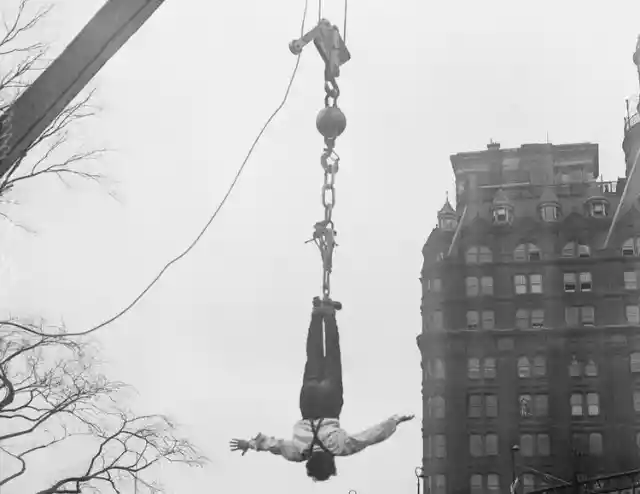
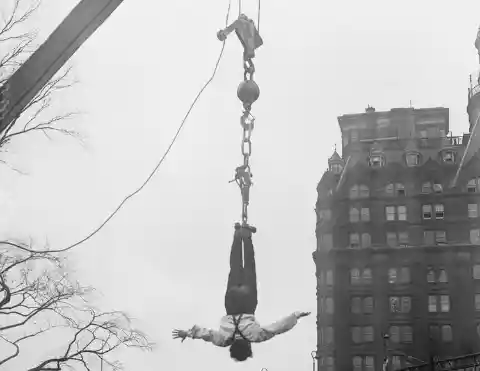
Made famous by the legendary performer Harry Houdini, magicians since then have added an escape from a straitjacket stunt to their regular repertoire. Inside these devices that are meant to keep someone bound, the performer will shake, convulse, and roll before seemingly gaining enough slack in them to manipulate the arm straps over the head or legs.
Freeing up the arms is the hardest part. Once the performer has room to move around and manipulate the rest of the jacket, any the remaining buckles and ties are relatively easy to defeat.
Trick: Rope Is Cut And Restored
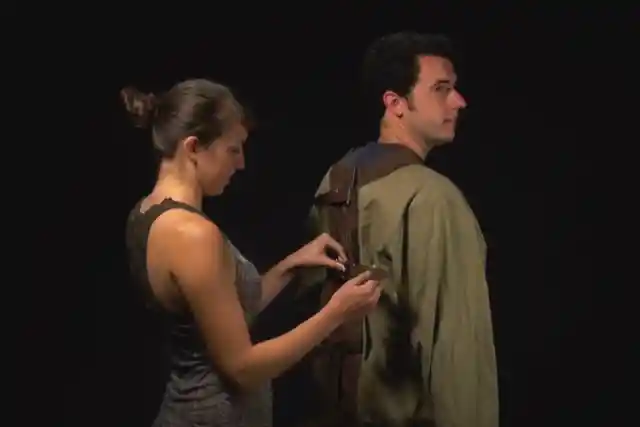
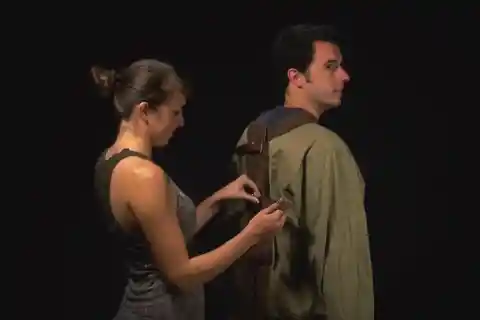
Houdini became the master of this trick, being able to escape, no matter how extreme the circumstances. As the performer is being locked in to the jacket, he takes a big, healthy breath, into their chest cavity and diaphragm. They simultaneously flex every muscle fiber in their body – even the jaw.
Releasing a breath and relaxing the muscles provides just enough room inside to manipulate the straps. The convulsions heighten drama, but accomplish little else, and are merely added for entertainment value.
Trick Revealed


Just like a deck of cards, rope is a standard tool for any illusionist to possess. Its ability to be lengthened or shortened with quick misdirection makes it an asset in any magician’s presentation.
In this classic trick, a standard piece of half-inch rope is doubled and the loop is cut. The magician then somehow restores it back to one piece without turning away from or distracting the audience.
Trick: Floating Assistant
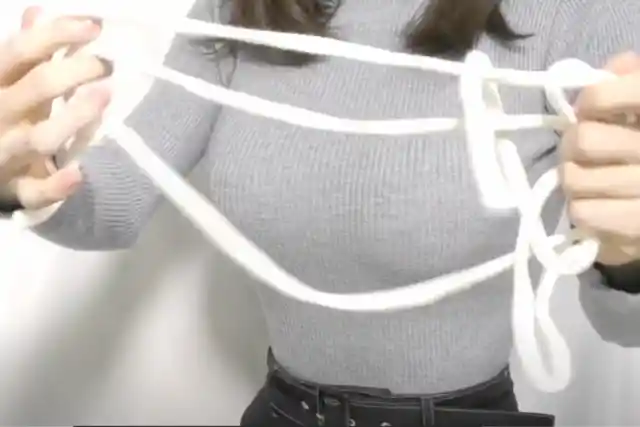

The magician has a short length of the same rope, concealed in the hand that’s used to hold the main piece when he or she appears to cut through the looped end. But the loop that’s cut is actually a loop made by folding the shorter piece and pulling that loop into view to cut.
It’s an excellent effect when the rope is miraculously mended within a second or two. When done well, the audience never even considers that the long piece was never actually snipped in the first place.
Trick Revealed
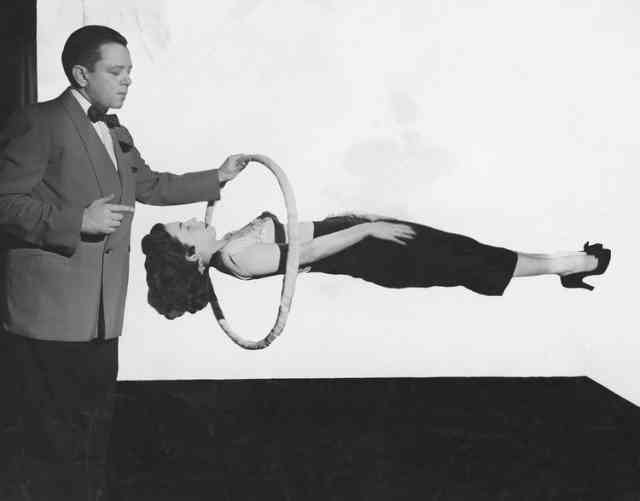
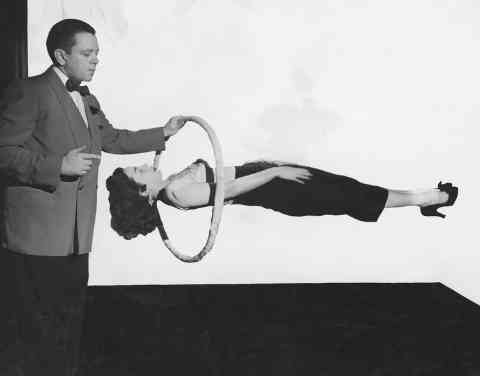
The performer has his lovely assistant subdued as if in a trance. She barely breathes after she and her flowing dress are situated on the two chairs that initially hold her up. The magician quietly removed the chairs.
She hovers in mid-air without anything around her. The magician runs a hoop over her body to rule out cables or heavy-duty fishing line suspending her in place.
Trick: Predicting What’s Written Down


The magician uses a specially built frame to hold her up. The frame begins with a base, bolted into the floor. He stands in front of the base so the column that rises up behind his waist cannot be seen.
A metal “arm” extends from the column and snakes out and around the magician’s waist. Now in front again, it connects to the platform upon which the assistant is lying. Her loose, frilly outfit conceals it. The hoop used is large enough to reach from one assistant’s head to the middle. There, it’s gracefully manipulated over the connecting arm, then pulled over and away from the assistant’s foot end.
Trick Revealed


Situated as the teacher in a classroom formation, the performer tells the audience there’s something written in an envelope on the table in front of him. While cutting strips out of paper and stacking them, he asks spectators for famous names. For each name he’s given, he writes it on a strip, folds it several times, and drops it into a jar. Sometimes this is also done with a chalkboard or whiteboard while giving volunteers little slates to write on themselves.
For the reveal, he has one spectator join him in the front of the room to draw a name from the jar. After the spectator reads the name aloud, he or she is given the sealed envelope. Everyone gasps to learn the name inside matches the unfolded strip of paper.
Trick: Sword-Swallowing


The magician makes an educated guess about what names might be shared. In theory, book club members might throw out famous authors like Franz Kafka or Charles Dickens. Likewise, teenagers, today might mention pop culture-relevant names like Cardi B and Timothee Chalamet. The prediction is sealed in the envelope or hidden from the magician.
The ending solidifies as names are written on the strips. Because the audience is not close enough to read the handwriting, they can’t see that the magician is only writing one name – the one that’s sealed up in the envelope or written on the board. He keeps dropping names into the jar until someone provides the one he needs to make the trick work.
Trick Revealed
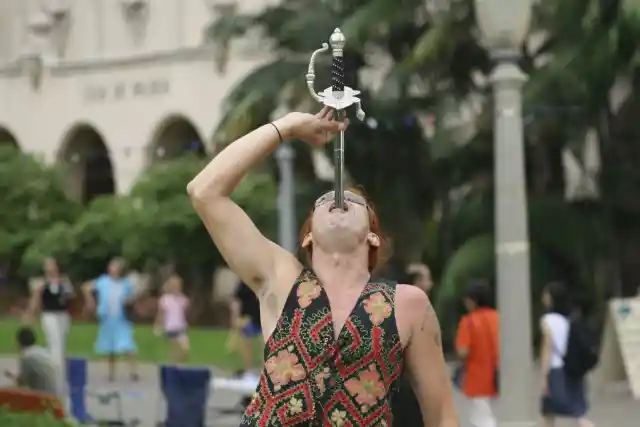

Performers literally spend years developing skills like this one. They must also do it without the use of props with retractable blades that can be spotted as fakes immediately, even from a distance.
The performers who get good enough to do it in public make it look easy. But trying to replicate it without years of practice could easily maim or kill you.
Trick: Lean-Back Levitation


This one is rarely a “trick.” A performer must learn how to relax the upper and lower esophageal canals while inserting the sword. Gravity (and perhaps saliva) are their only assists as a real sword enters the gastrointestinal tract and passes the trachea, heart, and other systems housing vital organs.
This is an incredibly dangerous hobby. A sneeze, a cough, an unexpected soft-tissue spasm – any of these could be fatal. It should go without saying, but do not try this stunt at home.
Trick Revealed

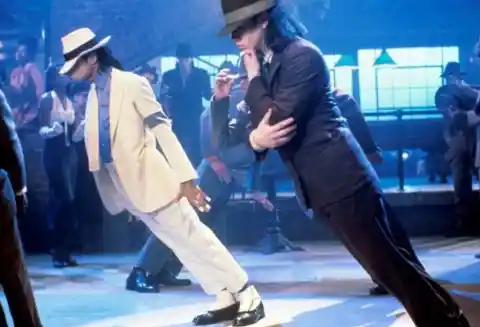
We saw this used to great effect in The Matrix, where Neo dodges a bullet with grace and fluidity as his black duster floats around him as if he was underwater. Michael Jackson and his dancers also pulled off a similar effect in his “Smooth Criminal” video, where the King of Pop leans almost impossibly forward.
Illusionists use this type of levitation to lean backward, sometimes bending the knees at a ninety-degree angle. It can make your knees hurt to watch. But it’s always impressive to see in real-time.
Trick: Putting Coin Through Wooden Table
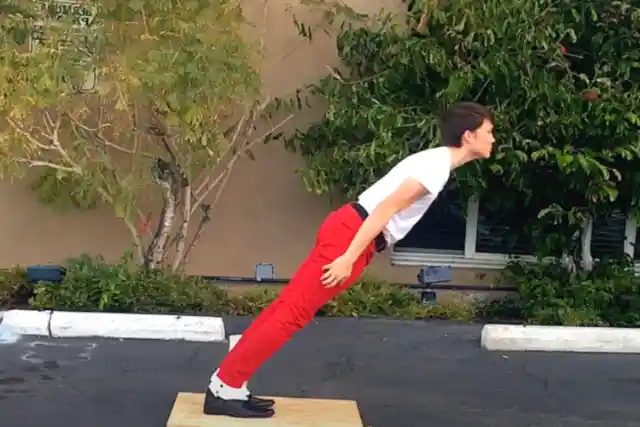
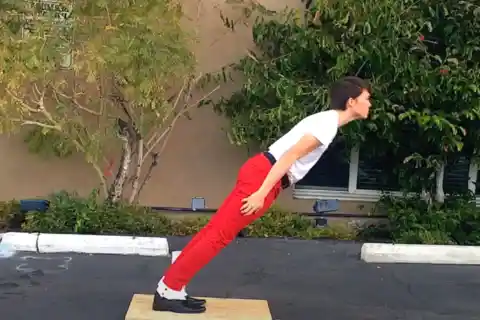
This trick requires some help from specially-recessed heels with a triangular notch that slips into a peg on the floor. This rig absorbs much of the pressure that would otherwise be borne by the legs and back, permitting a feat that laws of physics don’t otherwise support. It also provides a mechanism for performers to launch the effect without tipping off the audience.
These rigs are designed to work whether a user leans forward or backward. And as long as a performer’s leg muscles support the resistance, the chance of injury is minimal. The same cannot be said for tricks that require blades or broken glass shards.
Trick Revealed

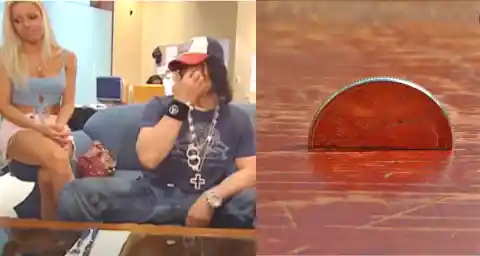
The magician shows a coin in his right palm, and he closes his hand around it into a loose fist. Then he knocks around on the tabletop. “Did you know,” he says with a mischievous grin, “that every table has a soft spot?” After appearing to find one, he slams his right hand down, opening it before it hits the table, while simultaneously reaching under the table with his left hand. We hear the coin clink onto the wood surface.
But he lifts his hand and the coin is gone. And when he pulls his other hand out from under the table, the coin is in that hand now. The audience even heard it go through.
Trick: Walking On Water
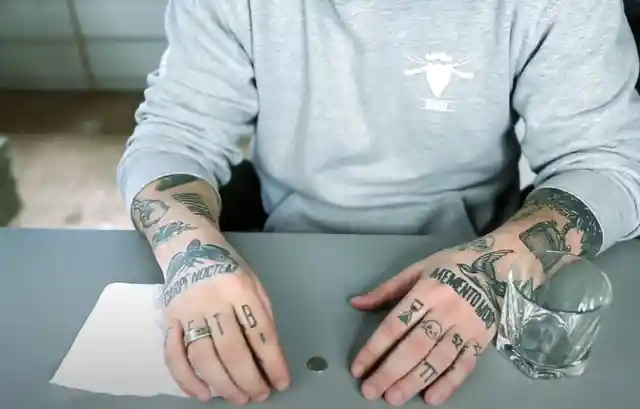
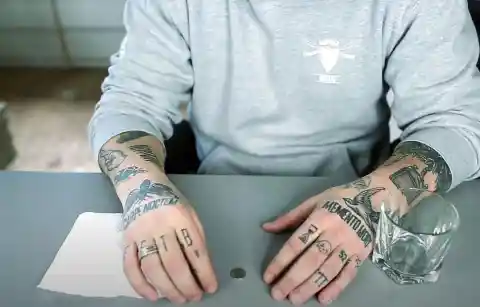
The magician starts this trick with a napkin on his lap and a second coin already on his left knee. When he gathers up the coin to close his hand around it, he’s actually pulling it toward him casually. While closing his hand, he slips the coin off the table with it and into the lap napkin.
Before knocking on the tabletop to find a soft spot, he grabs the coin from where it rests on his left knee. And he keeps it in his hand so he can tap it on the underside of the table when we need to hear that metal clink.
Trick Revealed


When someone who purports to walk on water decides to show off that skill, at least one person presents hopes they get soaked as a lesson in humility. But alas, when they don’t, it’s an affecting sight for the rest of us and certainly seems almost miraculous.
They appear to walk in peace and reverence, and much too slowly for attributing their success to momentum. Despite the historical religious opposition to magic, seeing someone standing on the water can almost be a religious experience.
Trick: Card Inside Of An Orange


Seeing how this trick is done may restore people’s faith. Often, plexiglass sheets, which become invisible in the water, are placed end to end in fairly shallow waters, to make this illusion possible. The sheets are held up in place by wide Lucite columns, which also become undetectable underwater.
The other ends of these columns are set into the lake bed to support the plexiglass when walked upon. The performer walks slowly to avoid disturbing how the column is seated at the lake’s bottom. Even a slight shift might lead to spectacular failure, so the steps need to be precise.
Trick Revealed


Before David Blaine gave up street magic for endurance stunts, he spent time in Harrison Ford’s home. Blaine told the man who played Indiana Jones to choose a card from a deck. He mixed Ford’s card back into the deck and then chose an orange from a nearby bowl of fruit in the actor’s kitchen.
The magician then instructed Ford to cut the orange in half. Ford was noticeably taken aback and flabbergasted to discover his card rolled up like a tube inside. When he pulled it out from the fruit center, he was speechless to find his card.
Trick: Levitation
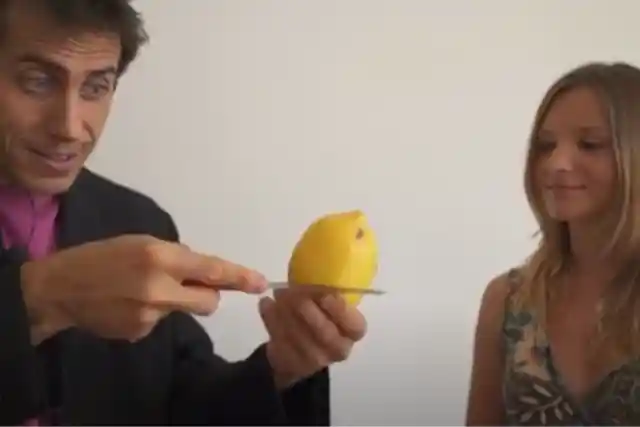
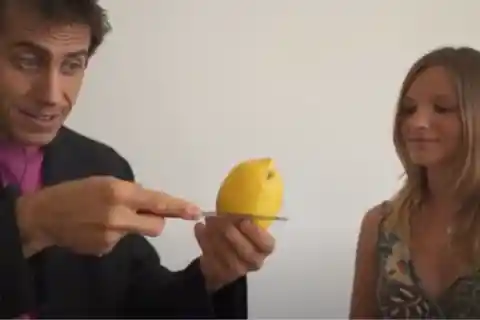
Once again, the illusion of choice is used to make the spectator believe they picked a random card. Meanwhile, the magician already knows which card will be “chosen,” cutting all the way around the stem of orange to remove that piece and set it aside. Then a rolled-up duplicate card of the same brand is inserted into the orange’s exposed, pithy center.
This is why a precise, careful cut is required when removing the stem. A drop of Superglue to reattach it should be all that’s required to complete the illusion’s prop. This has to be done within a reasonable time of the trick, as the orange’s acidy juice might change the color and turn the card mushy if not done quickly.
Trick Revealed

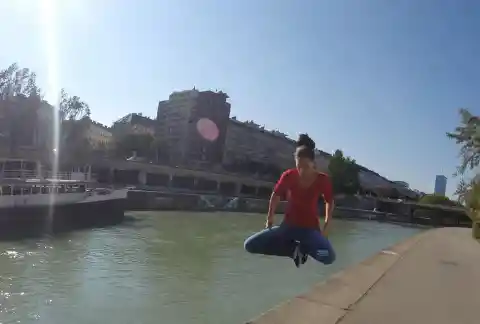
Fakirs in India are considered holy men who can perform miracles and magic like fire-walking, being buried alive, and lying on a bed of nails. Still, they make their living by soliciting money from passers-by for performing unique tricks.
Fakirs dress in billowy, jewel-toned silks and are often seen meditating several feet above the ground. In their seated, cross-legged position, their right-hand holds tightly onto a cane or staff, as if it’s the only thing that keeps them anchored to this earthly plane.
Trick: Turning Coffee Into Cash
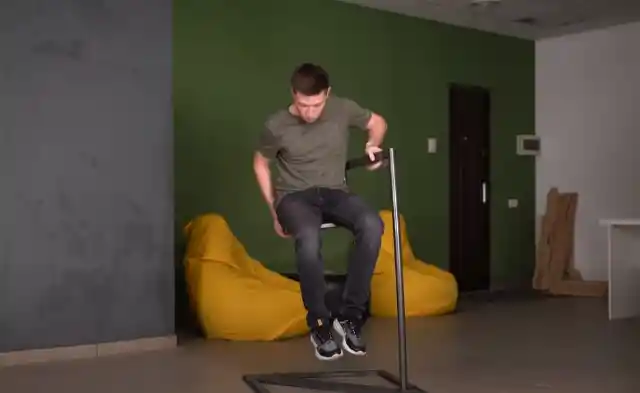

During this illusion, performers actually rest on a steel frame that runs from the ground. The frame rises up to their hand to emulate a cane or staff, then veers up into their (puffy) arm sleeves and down their back. The rig terminates under their behind, to act as a seat.
This explains why the floor or ground beneath them is always covered with a substance like sand or fabric, to conceal the fact that a metal base attached to their staff is bolted into the ground. It also explains why the performers always wear baggy clothes during this trick – to conceal the metal support frame all around them.
Trick Revealed


A magician starts by taking a perfectly ordinary cup of coffee, usually from an audience member. He then shakes the spectator’s full cup of coffee with cream.
Suddenly, that innocuous cup of coffee sees the liquid disappear. All that coffee cream that was in it earlier has now been replaced with coins, now overflowing fill the cup.
Trick: Floating Coffee Cup
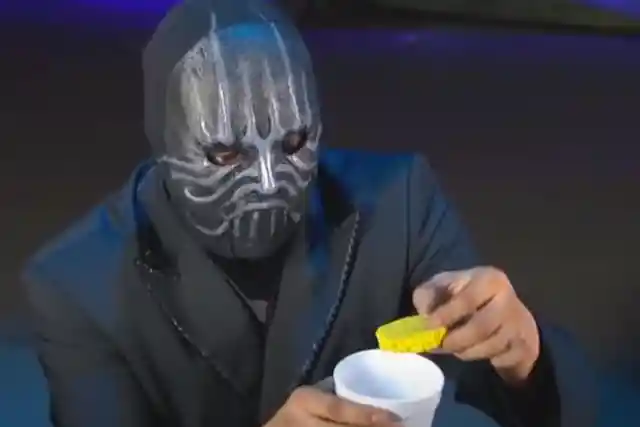
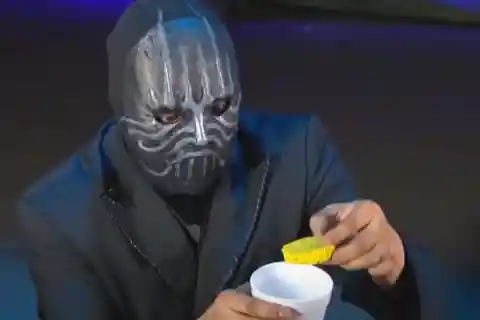
Often, performers will use a styrofoam coffee cup, since the inside is a dry sponge cut to fit its bottom. This also stops coffee from escaping through the hole cut. A smaller cup filled with coins is placed onto the sponge.
The magician pushes up the sponge through the bottom of the outer cup, until the coins become visible to spectators. As the coffee spills over, the sponge expands while absorbing it and pushes upward, while the coffee displaced by the coins is absorbed by the sponge.
Trick Revealed


The performer usually will ask to borrow a coffee cup from a colleague. With some effort, he manages to take this ordinary coffee cup and make it into part of his act.
He somehow is able to balance the cup in the air. His colleague and any onlookers watch, gape-mouthed, as the cup floats between the performer’s hands.
Trick: Object Into Soda Can
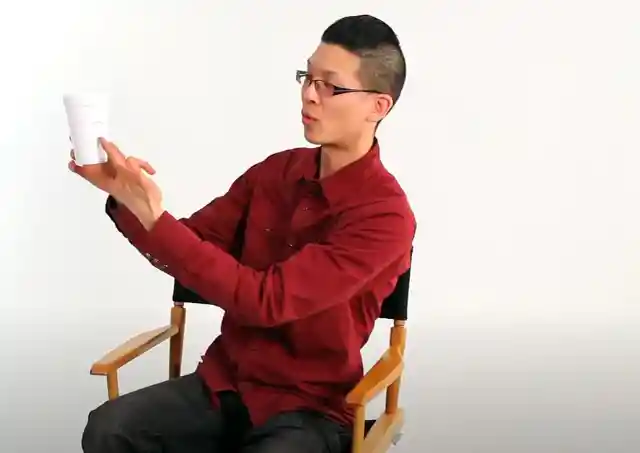
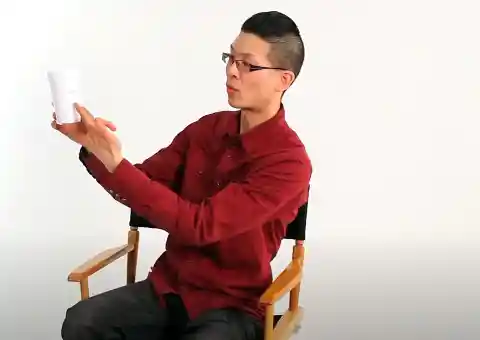
This can only be done with a styrofoam cup that’s less than half full. It is best performed in an environment with ambient noise to mask the crunch as the styrofoam is breached.
The performer simply pushes one of his thumbs through the cup, above the coffee level, and lets go of the cup with all his fingers extended. Moving up and down or shaking slightly adds to the effect of floating or levitating.
Trick Revealed
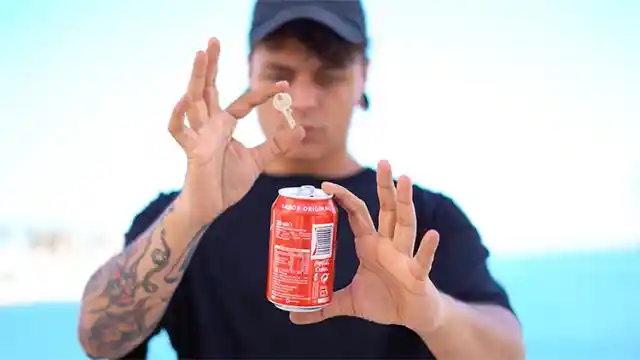

The magician shows a sealed can of soda and a shiny quarter. Soda in one hand, coin in the other, he shoves the quarter hard into the can’s bottom. The quarter disappears.
He then pops open the can and pours the contents into a beer glass, slowly so the audience can see when the quarter comes out. It does not – at least not until the end when he shakes the can so they can hear it’s still inside. He carefully dumps it into his hand.
Trick: Recreating Drawing

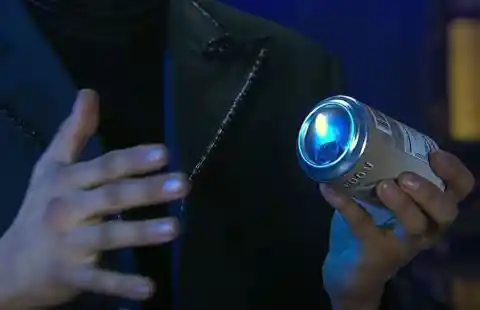
When the magician shoves the coin into the bottom of the can, he keeps the can tilted so the coin rests in the recess on the bottom. After he shows his empty hand to the audience, he lets the coin fall back into his hand. He palms it until it needs to go back into the bottom recess to clink around when they can’s been emptied.
Then he palms it again to return it to the can’s recessed bottom. We hear the rattle when he jiggles the empty can. He palms it again then drops it, so it appears to fall out of the can as it’s tipped upside down.
Trick Revealed
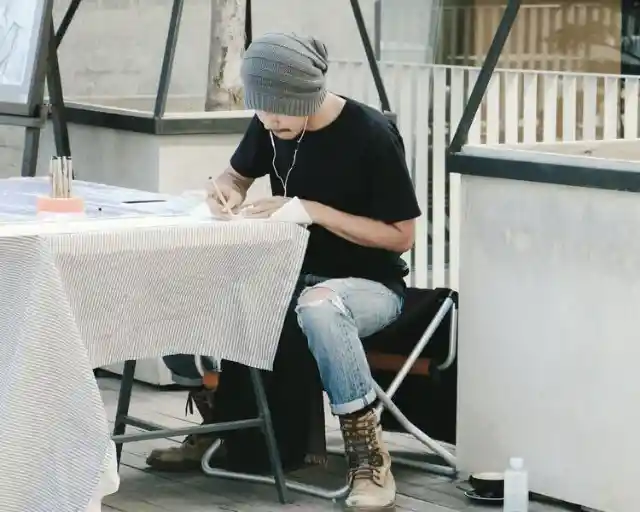
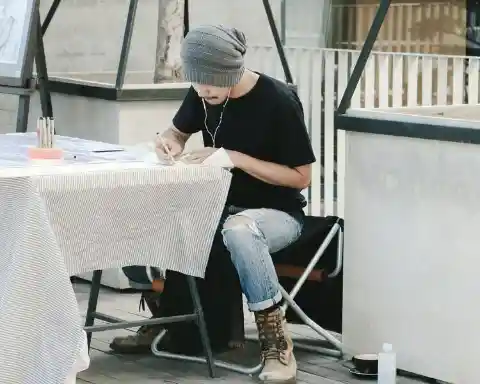
A spectator draws an object on a blank playing card, then slips the card into the middle of a blank deck. The magician finishes tapping the drawing into the deck with a blank card so the spectator knows that card was not touched.
Then he holds the deck up to his forehead and offers some broad clues, pausing to get the spectator’s reaction to his remarks. Finally, the magician lowers the cards and makes a drawing strikingly similar to the one buried in the deck.
Trick: Ring Pulled Through A Finger
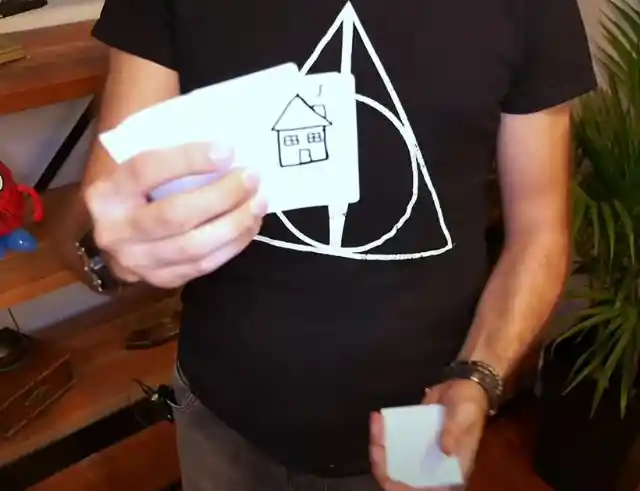
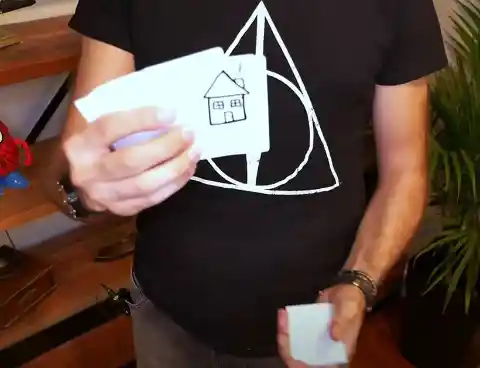
The magician discreetly lines up a second card above the one that the spectator has just slipped back into the deck. The spectator’s card is guided back toward the magician’s palm while the one being tapped into the deck is actually just another blank.
The one in the palm is slipped to the bottom of the deck so the magician sees it as he raises the deck to his forehead. When he draws what he just saw, everyone is amazed.
Trick Revealed


As you watch it happen, you’re sure you heard the bone snap as the magician pulls a thick wedding ring completely through his finger. Neither flesh nor bone appears to suffer any ill effects afterward.
The ring in this trick is always sturdy and thick with edges that are rounded and smooth. This is crucial for success. But even more important is the angle at which it’s performed.
Trick: Mindreading
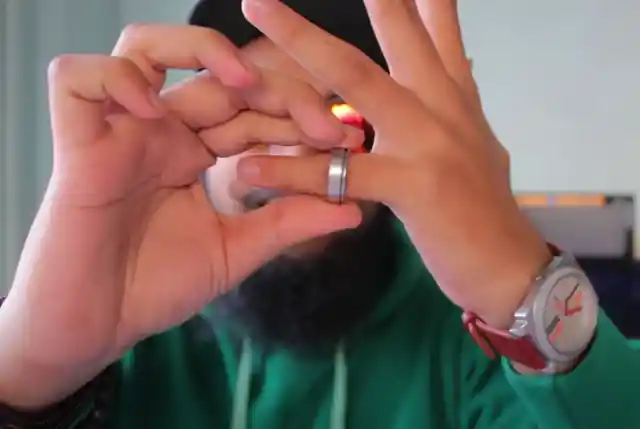
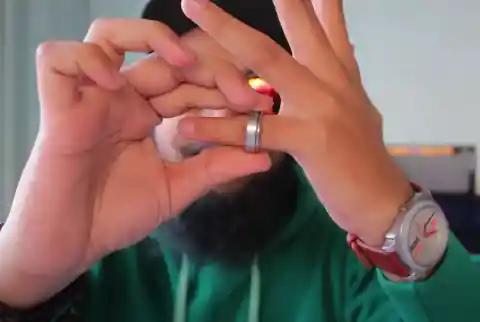
Before making the big move, the magician plays with the wedding ring for a bit, pulling it up and down the finger between the hand end and the first knuckle. On the last motion, he leaves the upper side of the ring close to the knuckle. He grips the ring with the thumb and index finger of his pulling hand, to block the spectator from having a full view of the ring.
The snap that might have been heard is a noise that most knuckles make when you crack them. This knuckle can pop when the forward pull on the ring – to slip it off the finger quickly – puts sudden downward pressure on it.
Trick Revealed
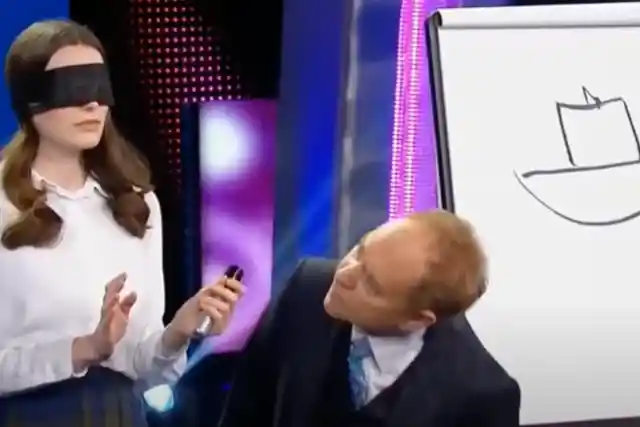
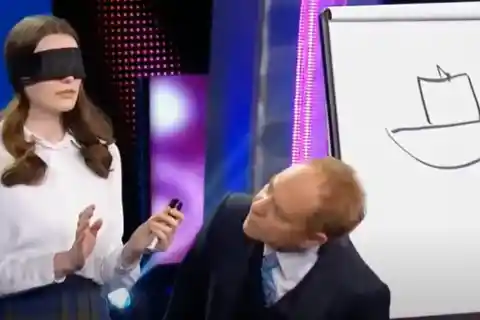
The performer asks the spectator to think of a number, multiply it by 2, add 8 then divide it by 2. Subtract the original number. Now convert that answer into its corresponding letter – 1 would be A, 2 would be B, and so on. What country begins with that letter?
Using the letter that follows, think of an animal that has it as the first letter. Advance one more and use that letter to name a color. The result, reportedly 95% of the time, is a gray elephant from Denmark.
Trick: The Guillotine
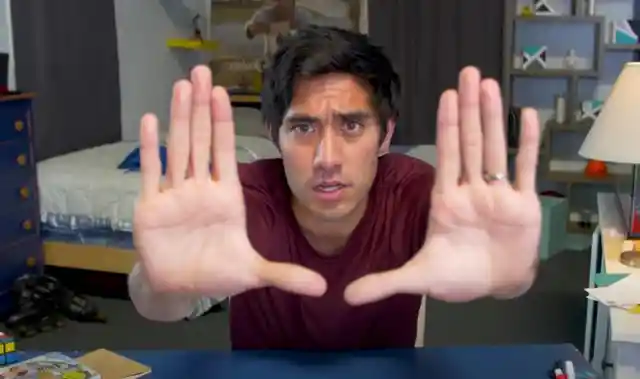
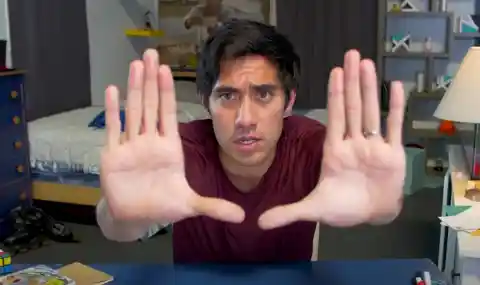
The first part of the trick is successful because of the laws of mathematics. The process makes use of calculations that are designed to arrive at the number 4. And since 4 equals D, Denmark is the country most often thought chosen.
The next letter is E, for which Elephant is the prominent choice. And while G is more likely to bring Green to mind in any other circumstance, as elephants are already on the brain, Gray is much more probable now.
Trick Revealed


This gruesome spectacle was part of shock-rocker Alice Cooper’s live shows all through the seventies and part of the eighties. Cooper was forced into a full-sized guillotine on the stage. As his head dropped into a basket, blood spurted to the end of the stage. His band finished the song without him while the audience lost its collective mind at what they’d just witnessed.
By the end of the song, the screams and roar of voices had weakened somewhat. That’s when Cooper returned to the stage for his encore.
David Copperfield and Criss Angel
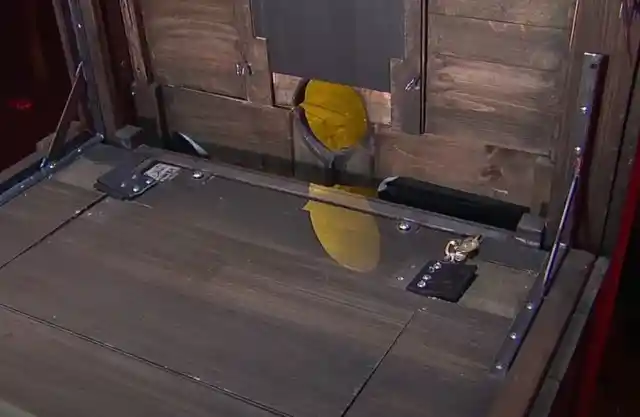
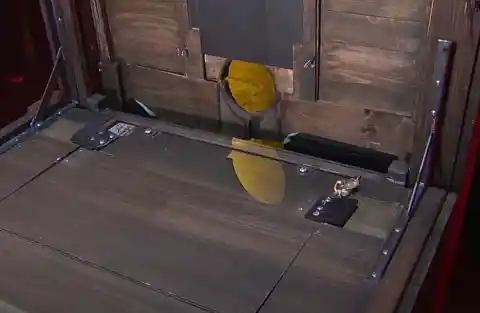
Two thick boards held Cooper’s head in place – one above his neck, one below. The lower one was concealed onstage by supporting players, and when the blade came down, the lower board dropped away. Cooper dropped with it, presumably onto a mattress or padded mat below the guillotine set. As he dropped, a plastic replica head with the trademark costume makeup was shoved through the opening.
As the fake head hit the basket below, aquarium tubing delivered copious amounts of blood that hid any missed-timing moments. In the documentary The Decline of Western Civilization, Part 2: The Metal Years, Cooper talked about how he literally learned the safest way to perform this effect from Hollywood filmmakers.
David Blaine and Penn & Teller

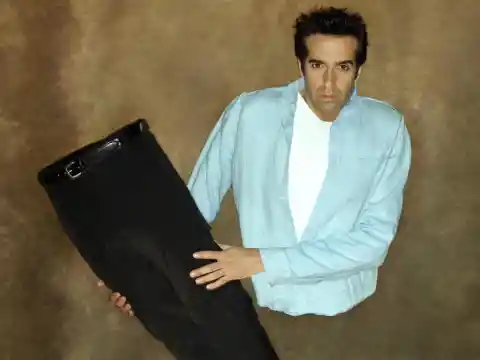
David Copperfield walked through the Great Wall of China and made the Statue of Liberty disappear. He has his own museum of artifacts from every magical era. The museum is such a well-kept secret that tours of eight people or less are only sporadically approved to enter.
Criss Angel’s magic ruled the decade of 2000 to 2010. Eventually, he even began revealing how his illusions are done so everyone has an opportunity to learn them. Angel also started a foundation to help children with cancer after his son was diagnosed as a toddler in 2016; Angel remains its primary source of funding to this day.
Our Love Of Magic
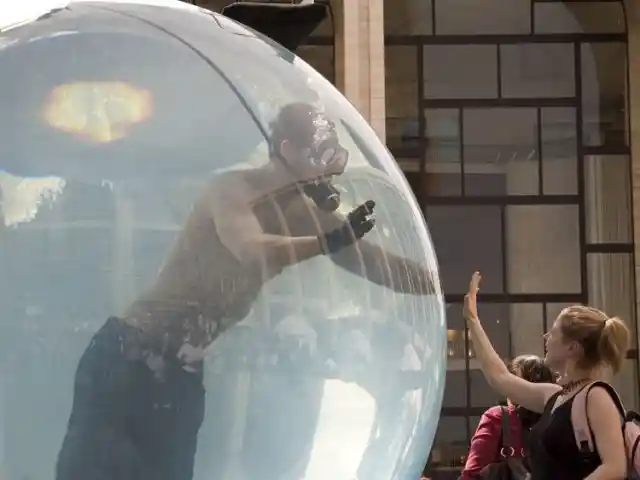
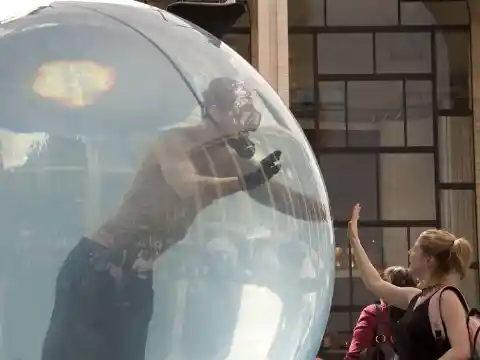
David Blaine’s delivery and unpredictable outcomes made his popularity rival Criss Angel’s. After establishing himself as the undisputed master of street magic, Blaine successfully shifted his focus to endurance stunts that were often witnessed by viewers in several city blocks.
Penn Gillette and his silent sidekick Teller brought a comical edge to magic in one of the longest-running Las Vegas shows in existence. Ticket buyers never know if the show will include knives, baboons, flame throwers, or all of the above. On their television series Penn & Teller: Fool Us, guest magicians try to perform tricks for which Penn and Teller can’t explain the inner workings.


While fictional, one of the most famous magicians has to be Harry Potter, of the iconic book series by J.K. Rowling. Publishers rejected her original manuscript twelve different times before one gave it any attention. Now Rowling – who became the world’s first billionaire author – would still be wealthier than the entire monarchy of England, if not for her generous support of charities.
Her wildly popular novels spawned blockbuster films, theme parks, and a whole world of itself. HBO Max plans to air a special in January 2022, Harry Potter 20th Anniversary: Return to Hogwarts, commemorating 20 years since the first movie. Rowling’s bespectacled wizard and his friends have ensured that the world’s most legendary magician might always be a fictional character.